Why you can trust Tom's Hardware
Comparison Products
We compared the WD Red SA500 against a few other mainstream SSDs. The Crucial MX500, Samsung 860 EVO and QVO, and a WD Blue 3D represent our SATA contenders. We also added the entry-level Intel 660p and high-performance Adata XPG SX8200 Pro to represent the NVMe competition. We also threw in a 6TB WD Black HDD.

Game Scene Loading - Final Fantasy XIV
The Final Fantasy XIV StormBlood benchmark is a free real-world game benchmark that easily and accurately compares game load times without the inaccuracy of using a stopwatch.

While users won’t normally game with the WD Red, it does help us paint an overall picture of the device’s performance characteristics relative to other SSDs in the market. Like the WD Blue 3D and Samsung 860 QVO, the Red SA500 loads the game scenes in roughly 23 seconds.
Transfer Rates – DiskBench
We use the DiskBench storage benchmarking tool to test file transfer performance with our own custom 50GB block of data. Our data set includes 31,227 files of various types, like pictures, PDFs, and videos. We copy the files to a new folder and then follow-up with a reading test of a newly written 6.5 GB file.


The Red SA500 copied the 50GB test folder fairly quickly for a SATA SSD, outperforming the WD Blue 3D. But Samsung’s 860 EVO led by an average of 23 MBps. When reading back the 6.5GB test file, the SA500 delivered a respectable result of 476 MBps, although competitors seem to have the edge.
Trace Testing – PCMark 8 Storage Test 2.0
PCMark 8 is a trace-based benchmark that uses Microsoft Office, Adobe Creative Suite, World of Warcraft, and Battlefield 3 to measure the performance of storage devices in real-world scenarios.


Given that the 4TB model comes with lower write IOPS ratings, it performs a bit slower than the WD Blue 3D during the PCMark 8 application tests. Still, it delivered responsive performance that puts any HDD to shame.
Get Tom's Hardware's best news and in-depth reviews, straight to your inbox.
Trace Testing – SPECworkstation 3
Like PCMark 8, SPECworkstation 3 is a trace-based benchmark, but it is designed to push the system harder by measuring workstation performance in professional applications.
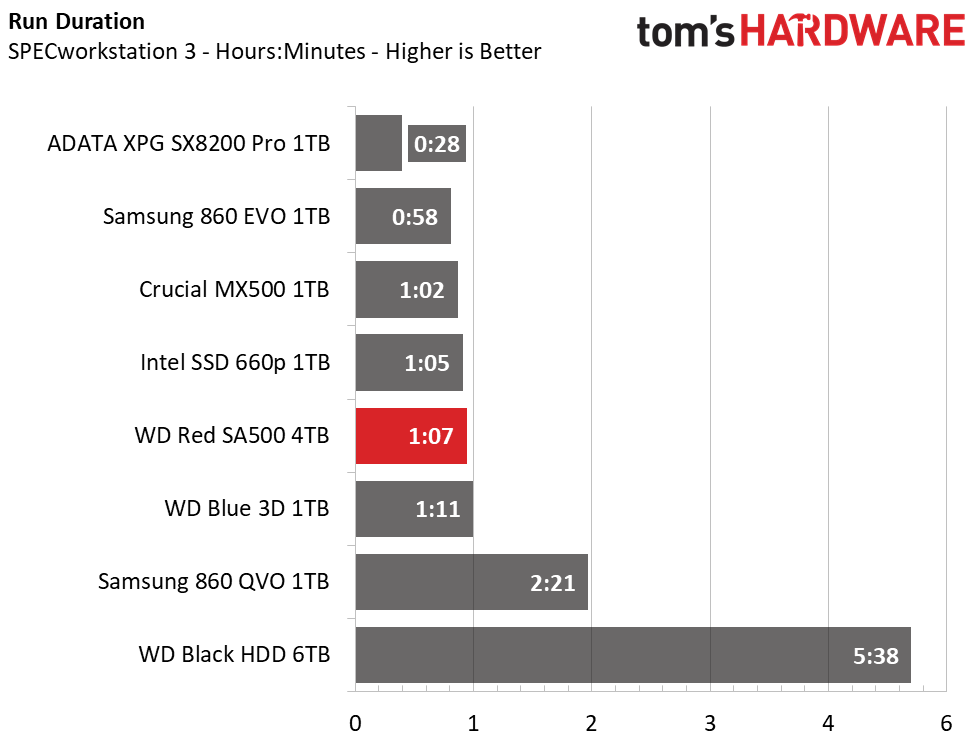
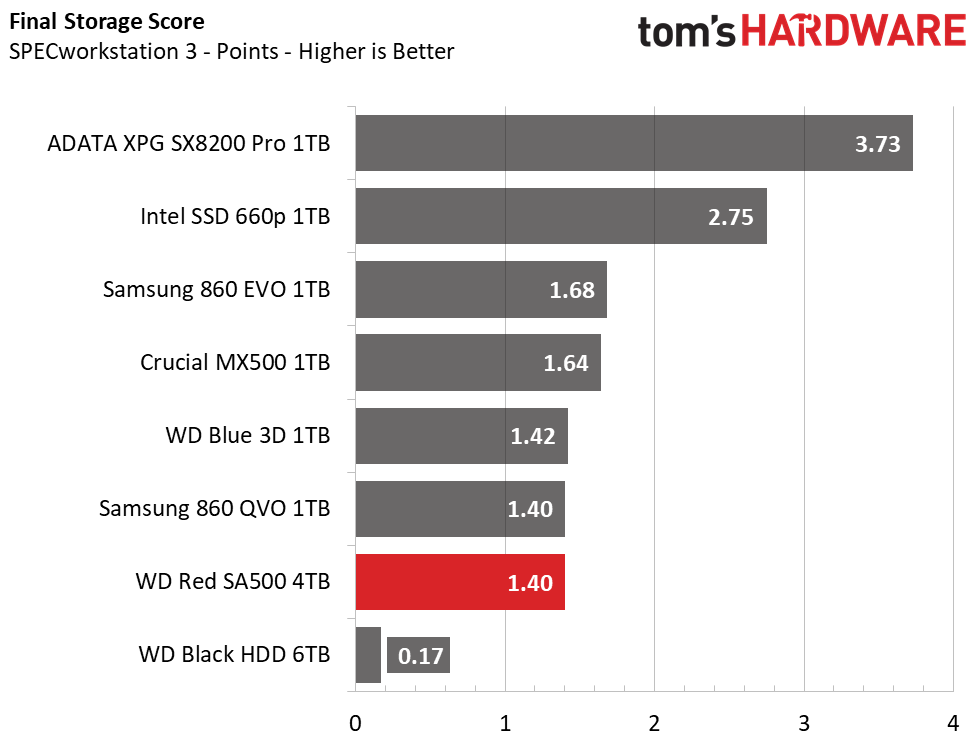
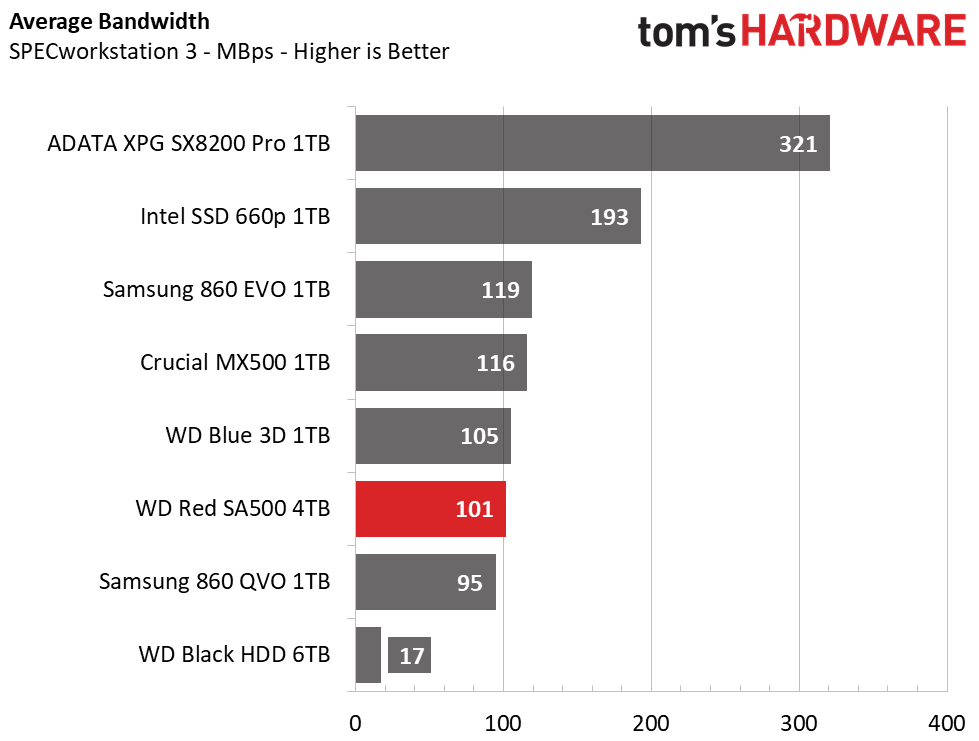


Overall, the SA500 nearly matches the WD Blue 3D and ties with the Samsung 860 QVO in the overall SPECworkstation 3 score.
Synthetics - ATTO
ATTO is a simple and free application that SSD vendors commonly use to assign sequential performance specifications to their products. It also gives us insight into how the device handles different file sizes.


We tested the WD Red SA500 at a QD of 1 to represent most day-to-day file access at various block sizes. We can see that most SSDs deliver performance that is under their rated peak performance, but overall, all the SATA SSDs perform roughly the same. They offer double the sequential performance of an HDD, but they also lag behind the NVMe competition.
Synthetic Testing - iometer
iometer is an advanced and highly configurable storage benchmarking tool that vendors often use to measure the performance of their devices.


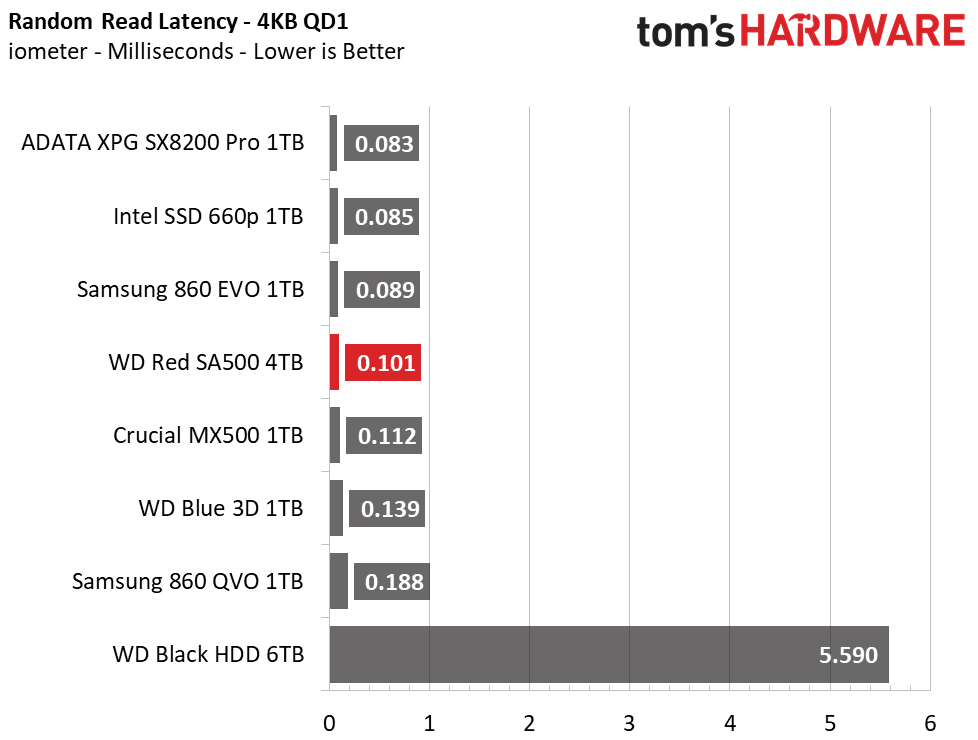


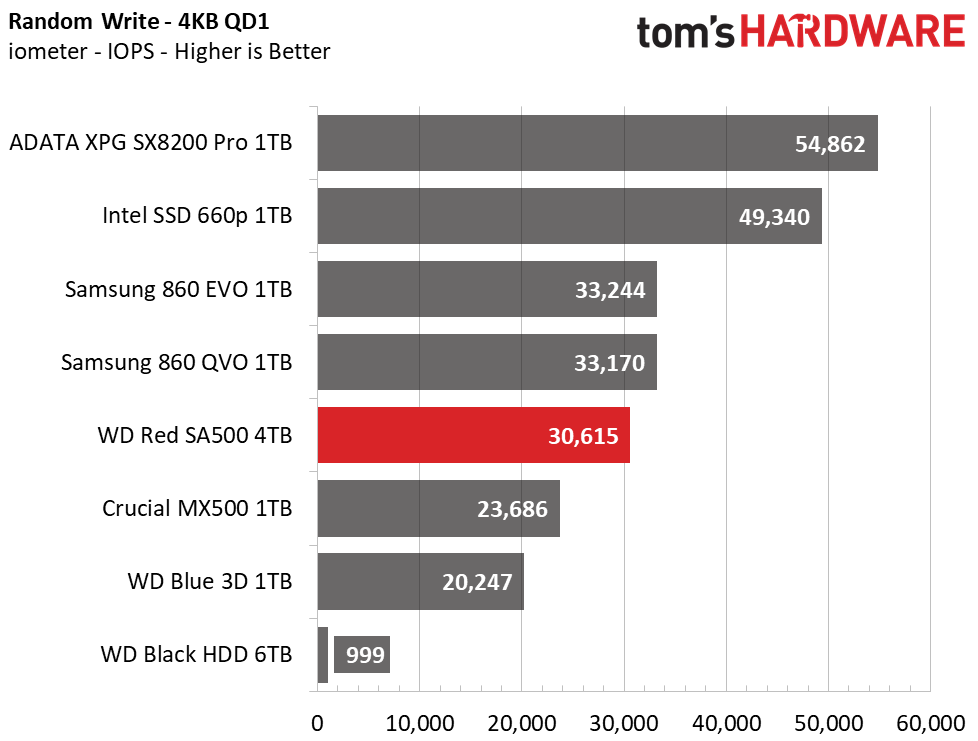
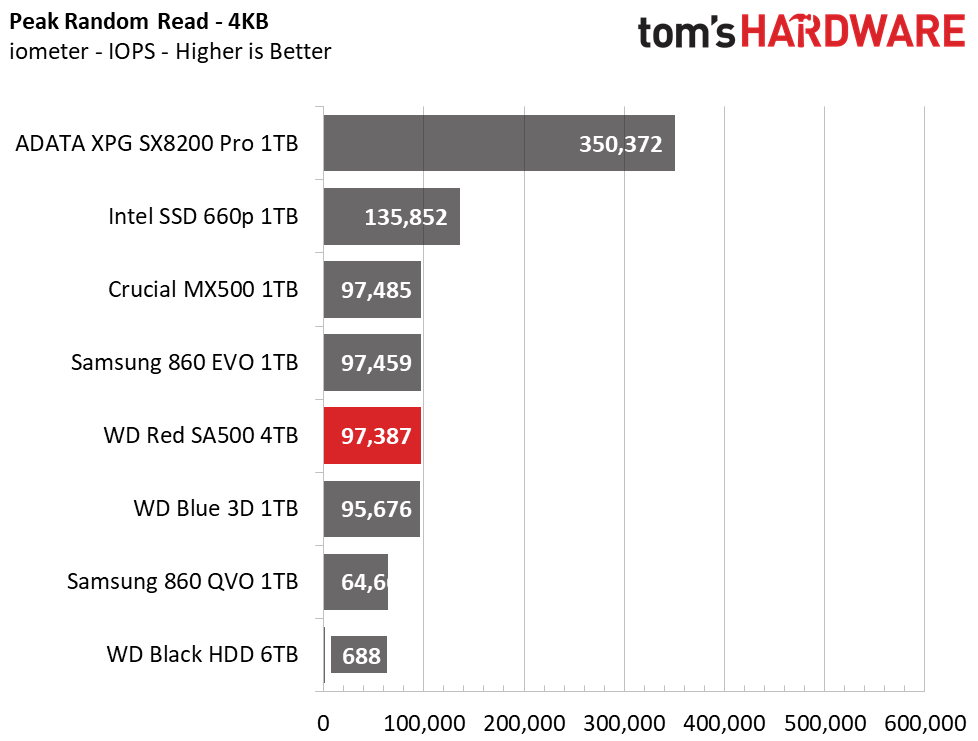
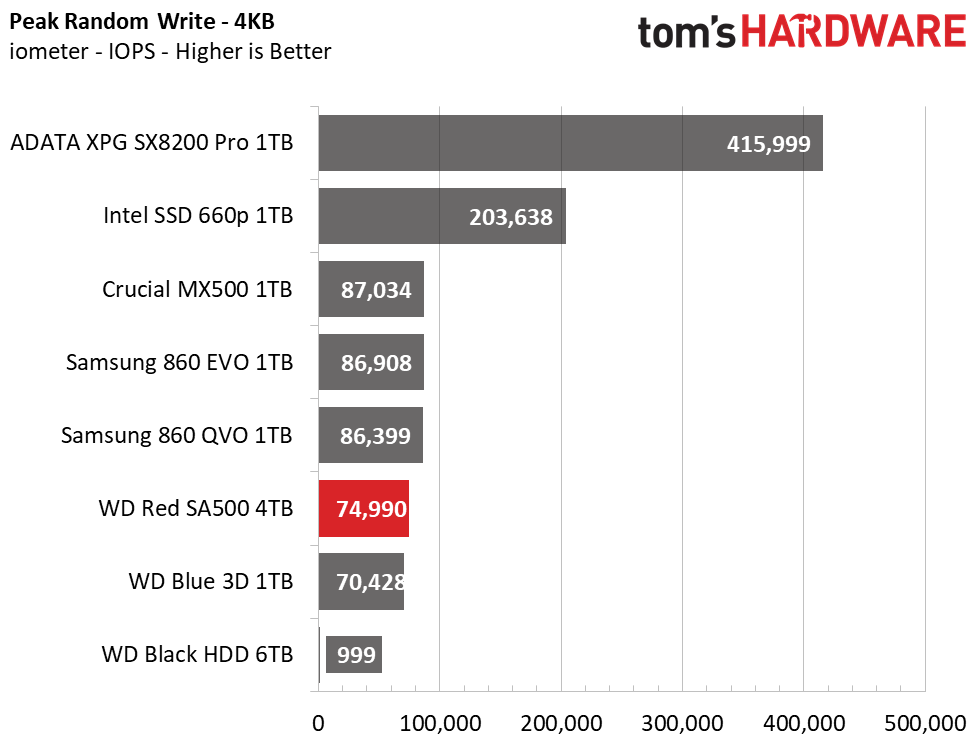
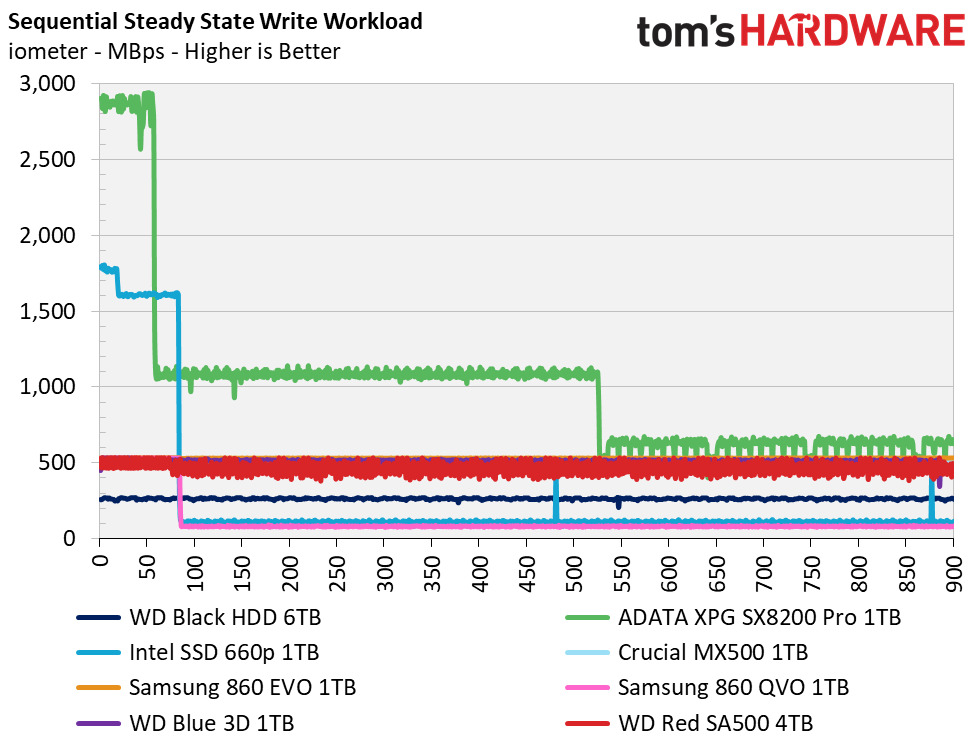

The SA500's peak sequential performance comes in at 551 MBps read and 520 MBps write, which is very close to its official ratings and the other SATA competitors. It also provided similar performance to other SSDs in our random workload tests.
The SA500 peaked at over 97,000 read IOPS and roughly 75,000 write IOPS at high queue depths. Testing at a QD of 1, the Red SA500 delivered responsive results of up to 99,000 read IOPS and over 30,000 write IOPS. And random response times are over thirty times faster than an HDD.
Sustained Write Performance, Cache Recovery, and Temperature
Official write specifications are only part of the performance picture. Most SSD makers implement a write cache, which is a fast area of (usually) pseudo-SLC programmed flash that absorbs incoming data. Sustained write speeds can suffer tremendously once the workload spills outside of the cache and into the "native" TLC or QLC flash. We use iometer to hammer the SSD with sequential writes for 15 minutes to measure both the size of the write cache and performance after the cache is saturated. We also monitor cache recovery via multiple idle rounds.
When possible, we also log the temperature of the drive via the S.M.A.R.T. data to see when (or if) thermal throttling kicks in and how it impacts performance. Bear in mind that results will vary based on the workload and ambient air temperature.

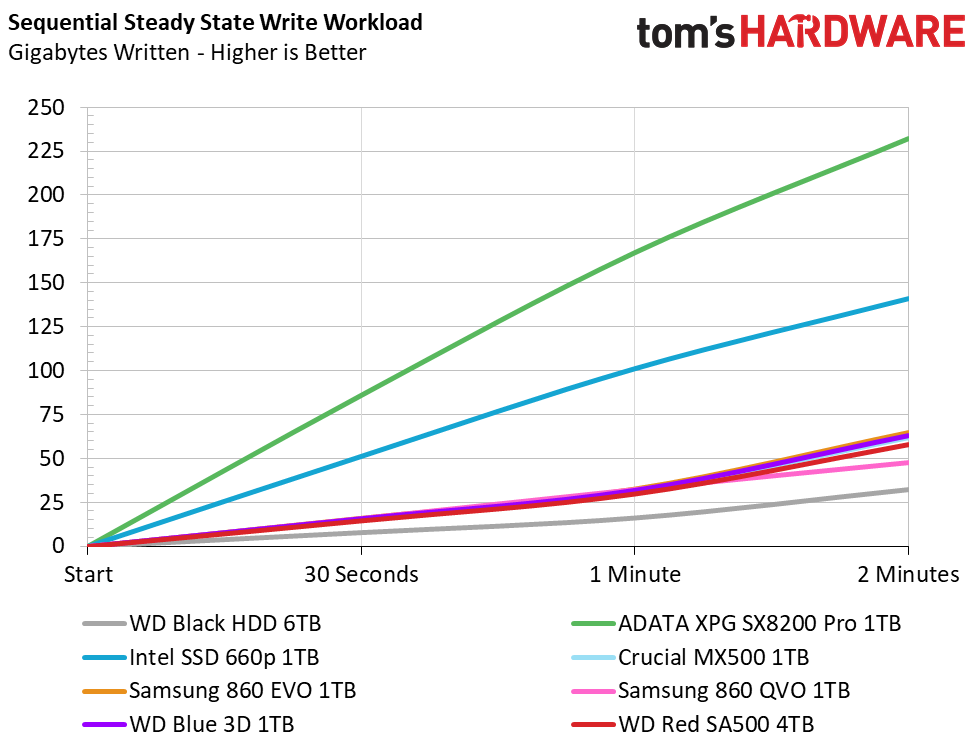

Our sample doesn’t exhibit any signs of an apparent SLC write cache, but then again, we couldn’t write to its entire capacity within the 15-minute time window. Instead, the drive writes slightly more inconsistently than the Blue 3D, fluctuating from about 400 MBps up to 533MBps seemingly indefinitely. On average, it wrote at a rate of 470MB/s and its temperatures were well within official ratings with little airflow.
Power Consumption
We use the Quarch HD Programmable Power Module to gain a deeper understanding of power characteristics. Idle power consumption is a very important aspect to consider, especially if you're looking for a new drive for your laptop. Some SSDs can consume watts of power at idle while better-suited ones sip just milliwatts. Average workload power consumption and max consumption are two other aspects of power consumption, but performance-per-watt is more important. A drive might consume more power during any given workload, but accomplishing a task faster allows the drive to drop into an idle state faster, which ultimately saves power.
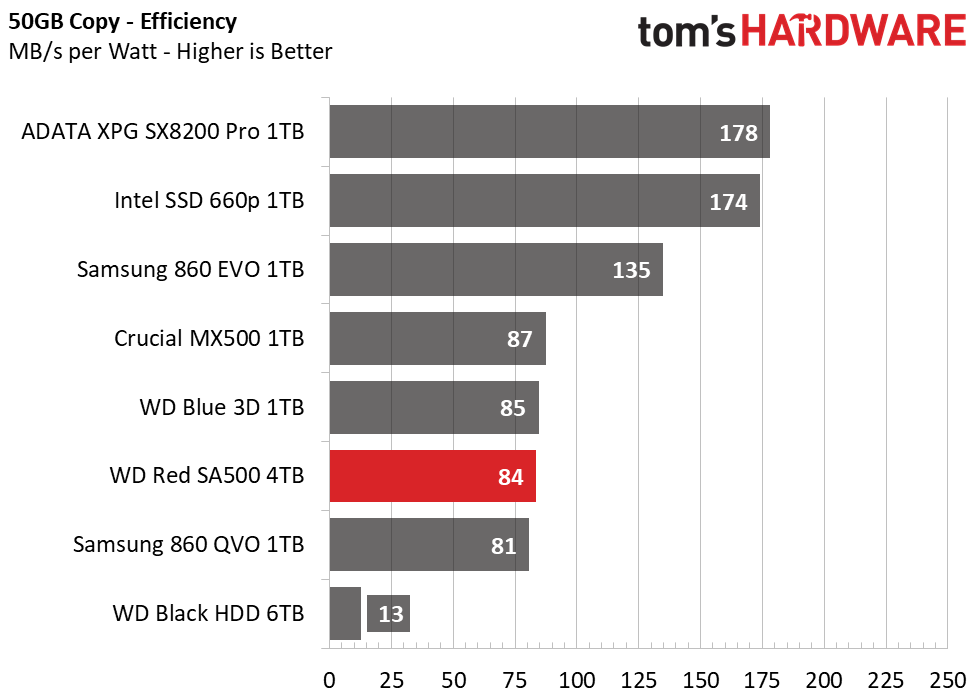



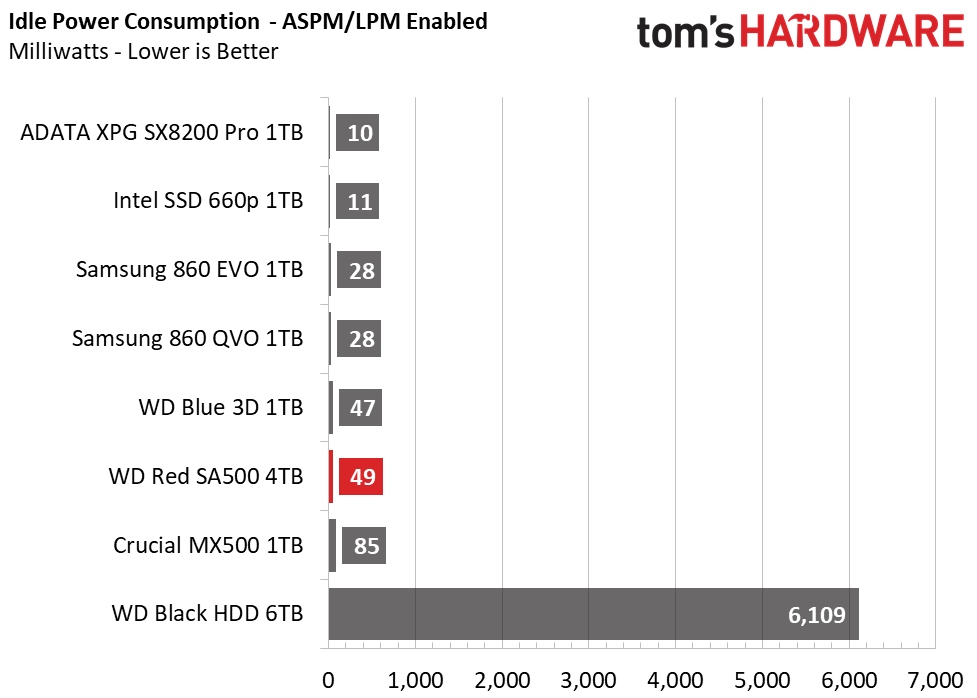
On average the WD Red SA500 is just as efficient as WD's Blue 3D, and quite similar to most other SATA SSDs. The Samsung 860 EVO shines above it, however, with a much higher efficiency score. At idle it consumes very little power, but again, Samsung’s 860 EVO comes out on top.
MORE: Best SSDs
MORE: How We Test HDDs And SSDs
MORE: All SSD Content

Sean is a Contributing Editor at Tom’s Hardware US, covering storage hardware.
-
dannyboy3210 I believe there is an error when listing the model specifications:Reply
500gb and 1tb both list TBW of 350TB and the spec sheet indicates 350TB & 600TB.
https://documents.westerndigital.com/content/dam/doc-library/en_us/assets/public/western-digital/product/internal-drives/wd-red-ssd/product-brief-western-digital-wd-red-ssd-04-00048.pdf